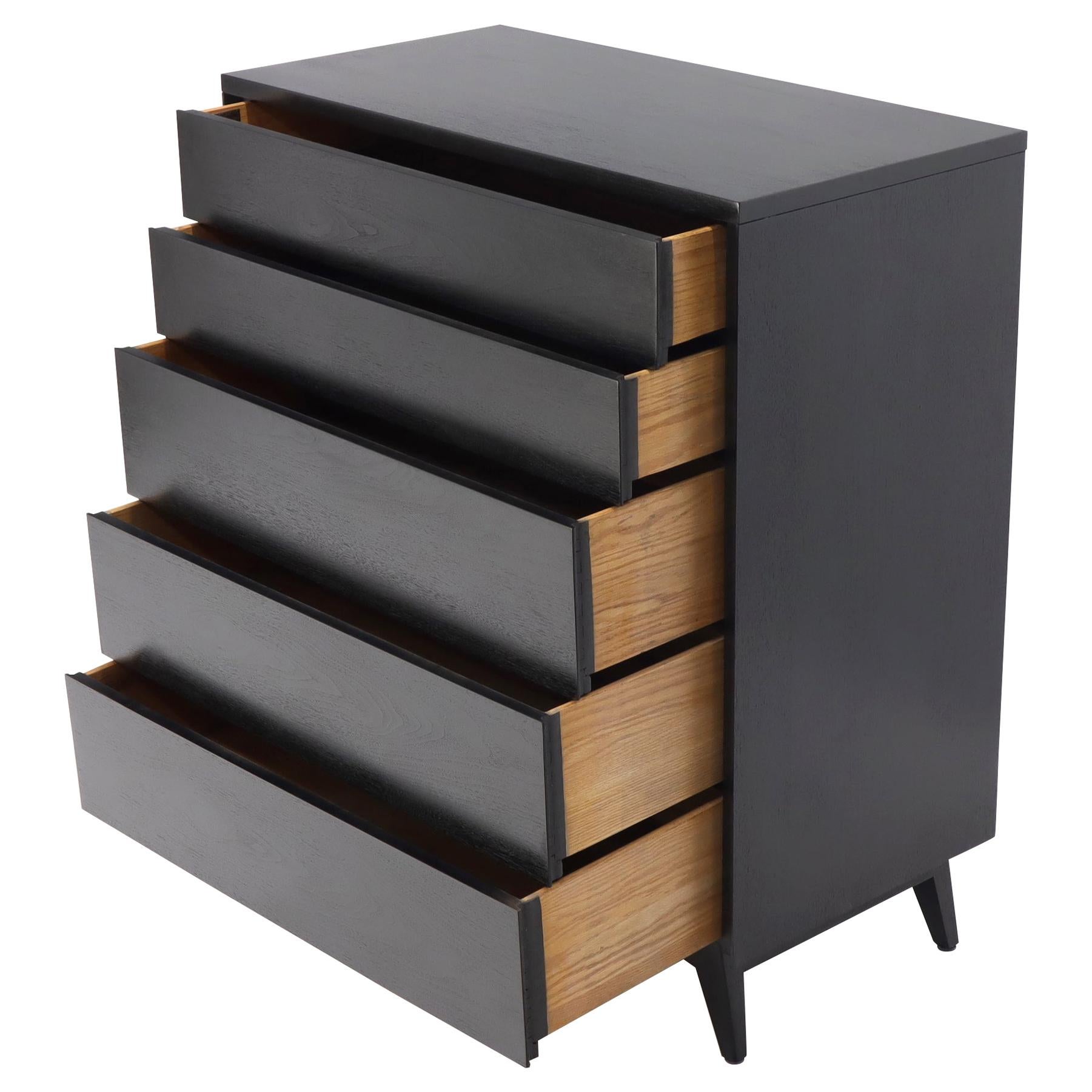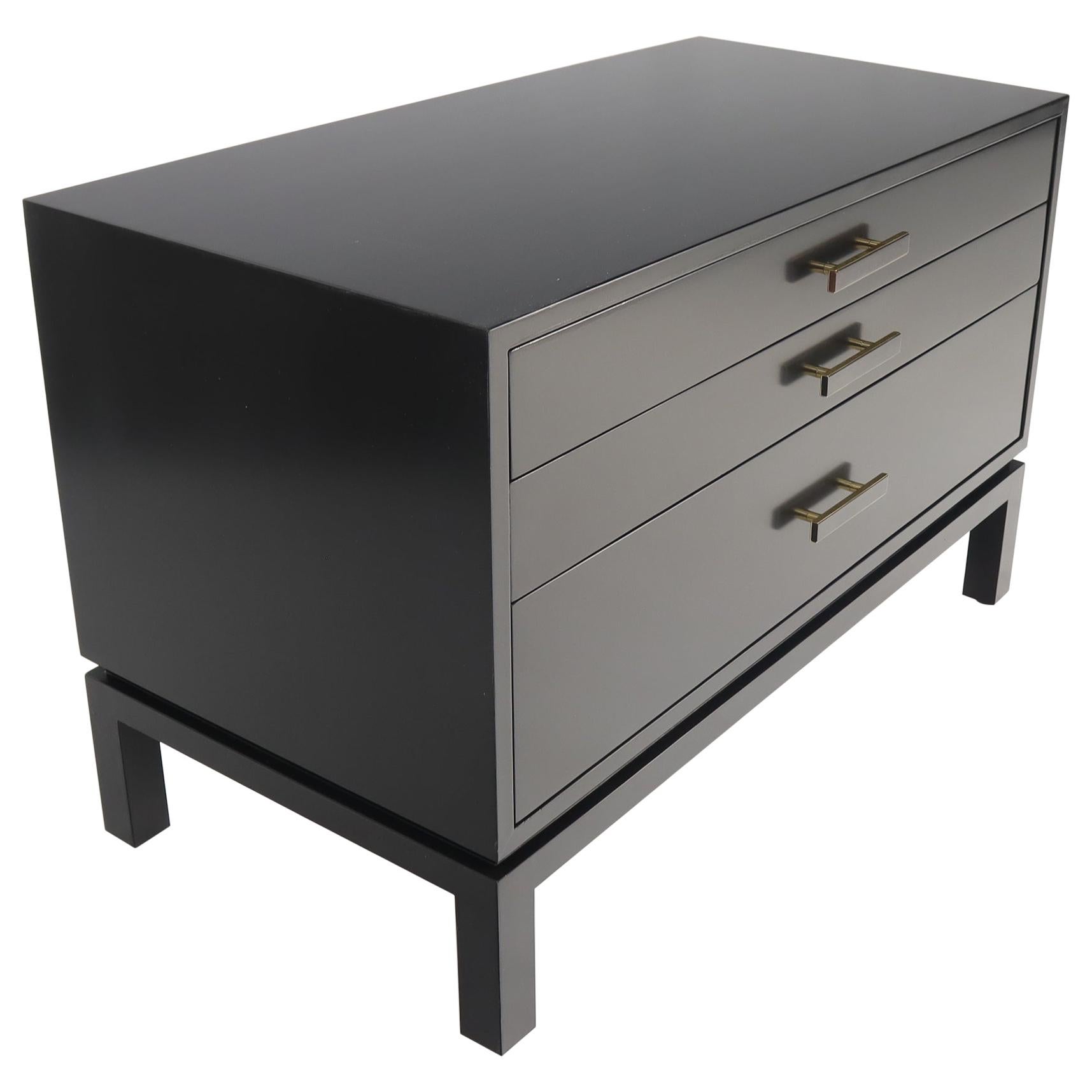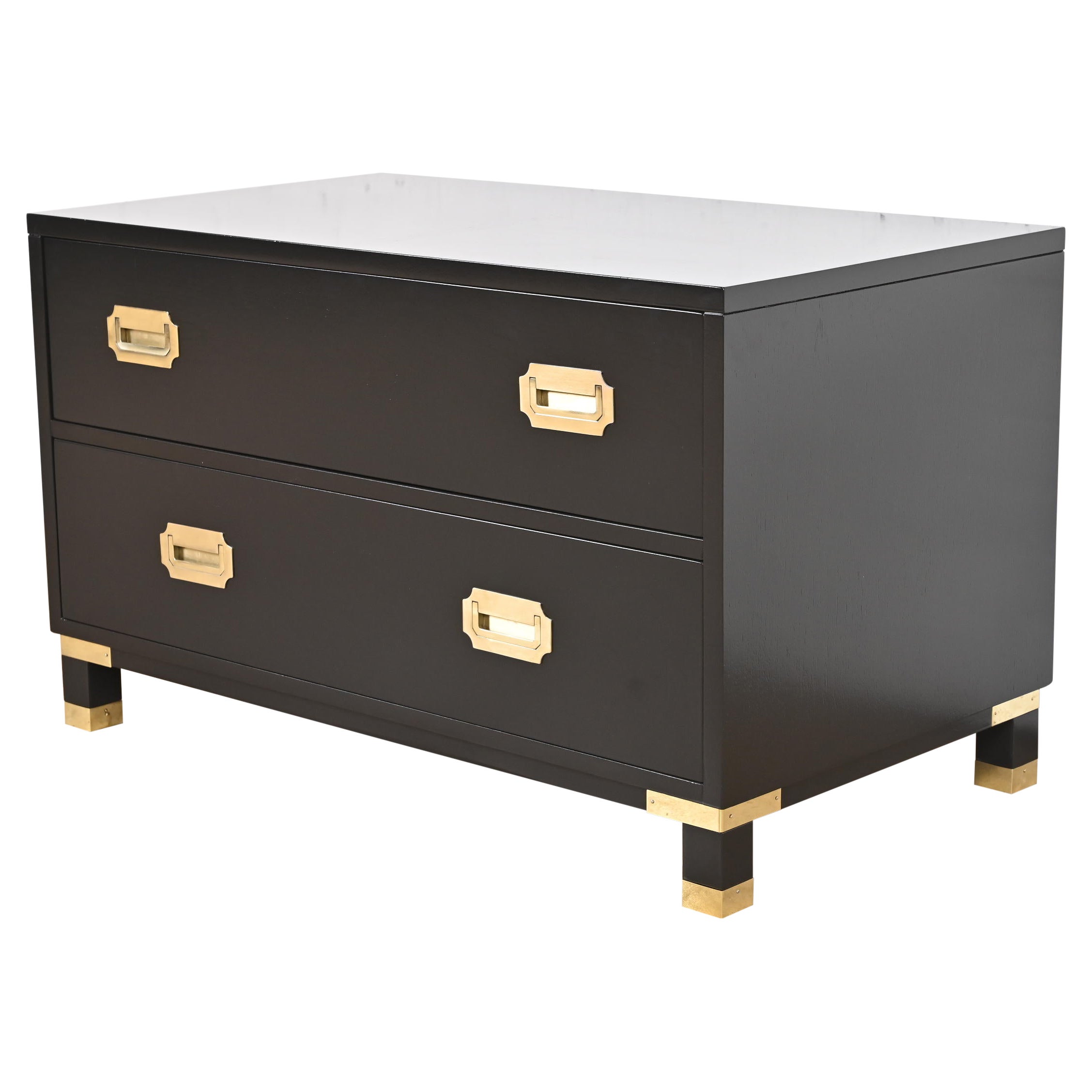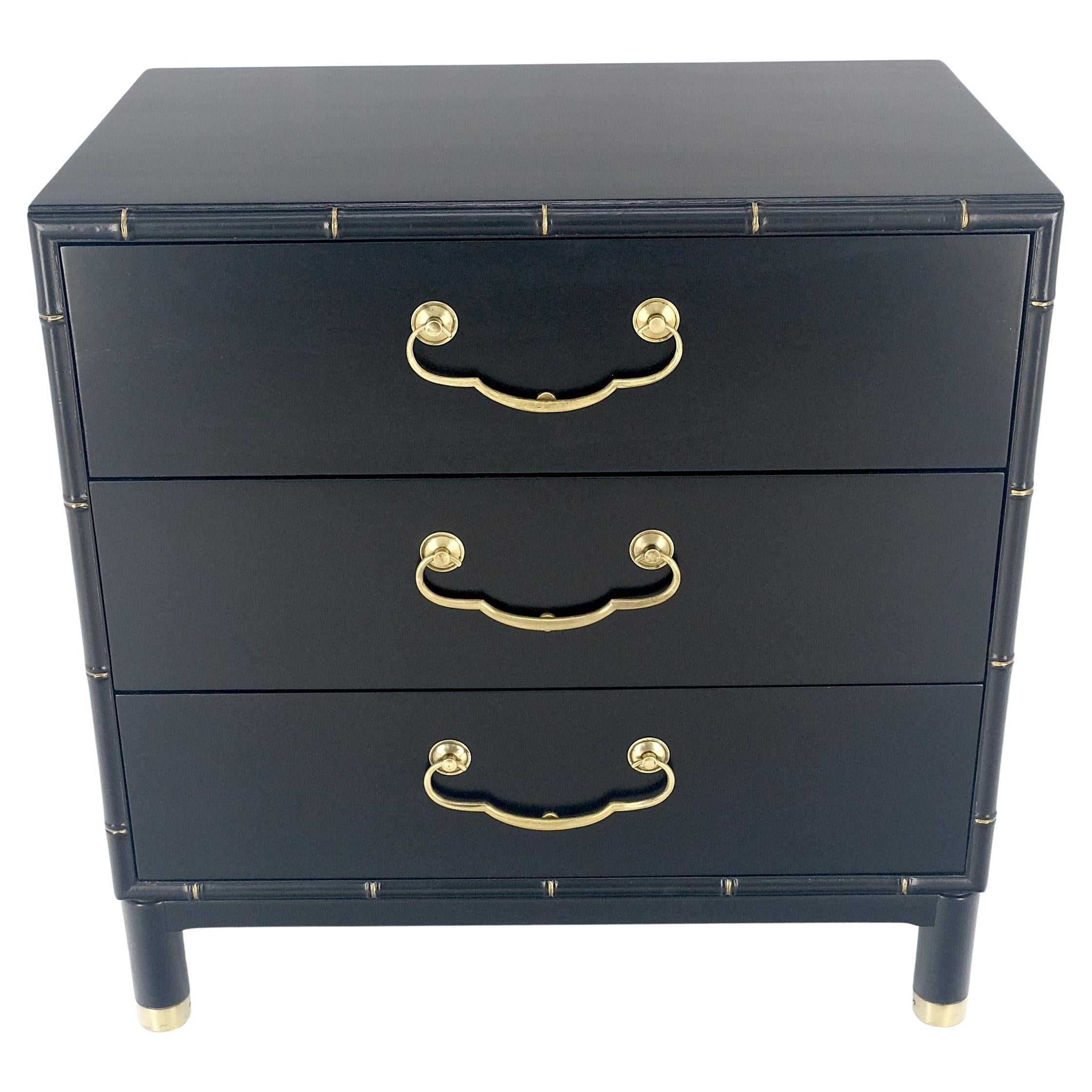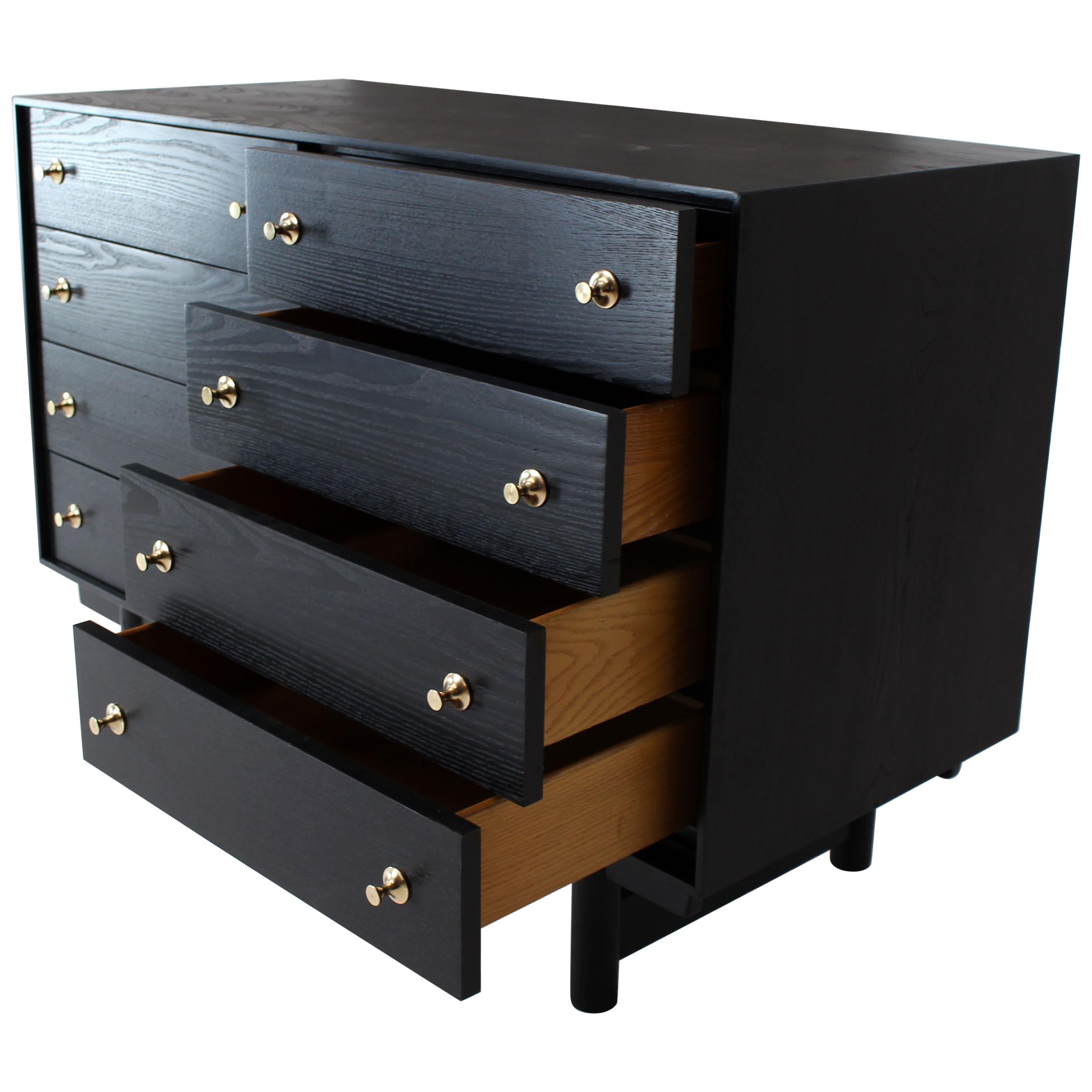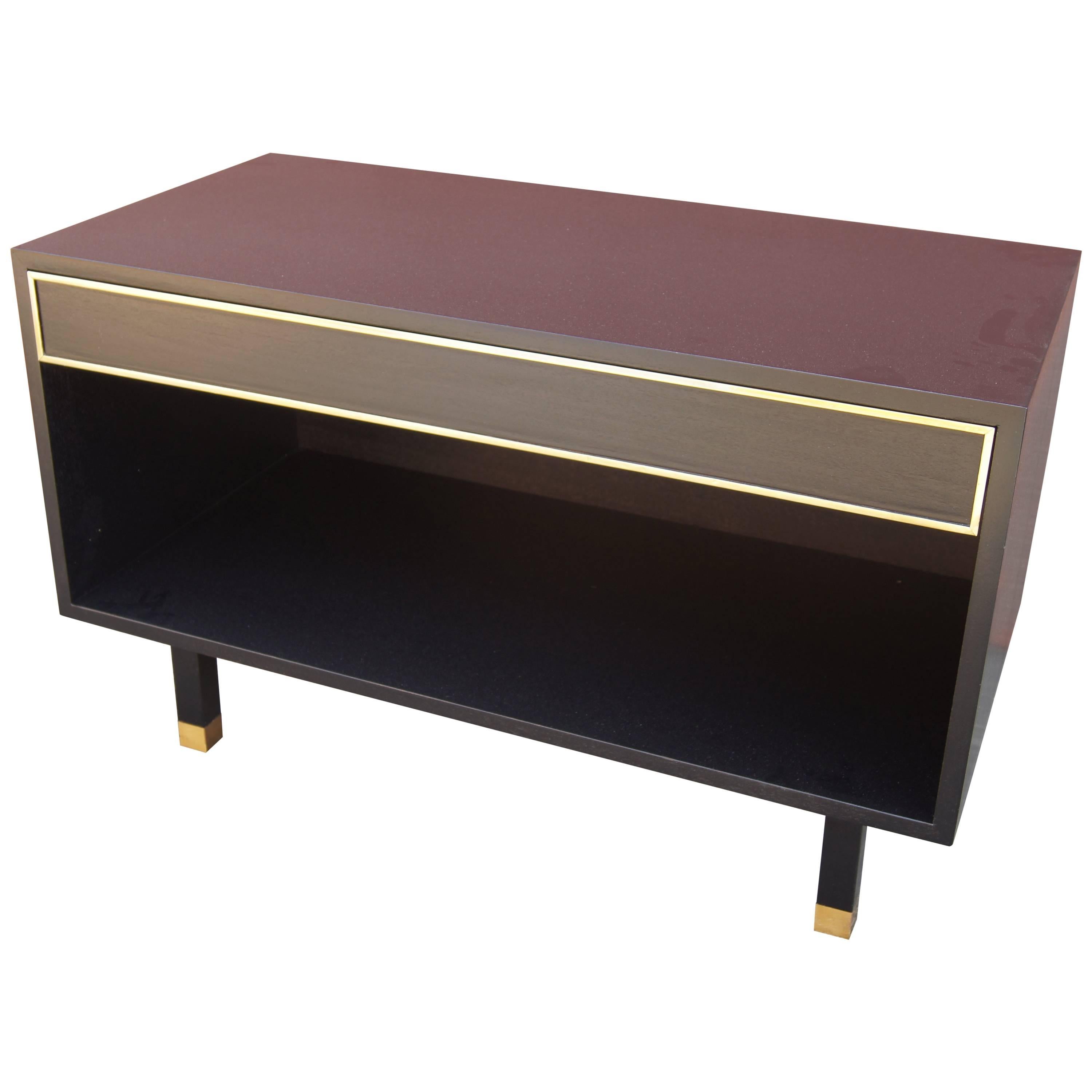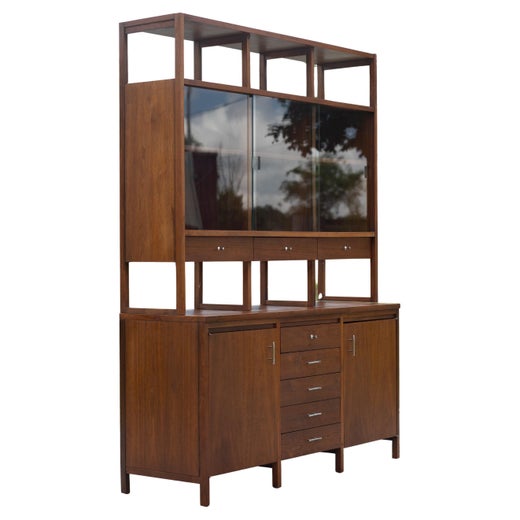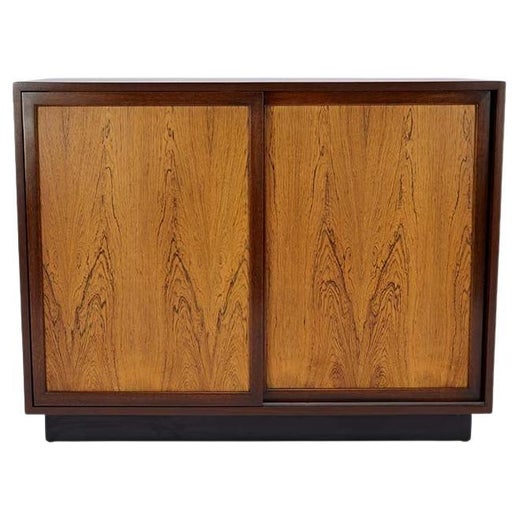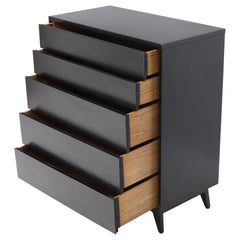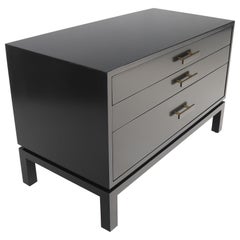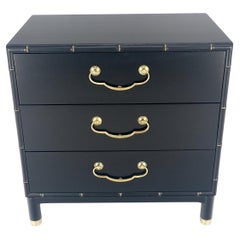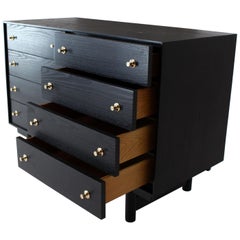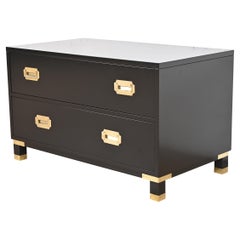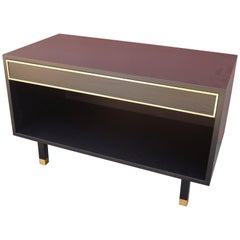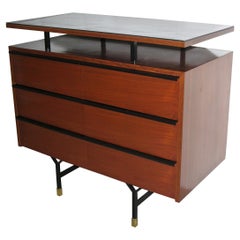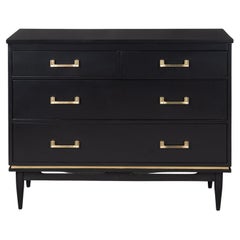Harvey Probber Black Lacquer Mahogany Brass Hardware and Legs 4 Drawer Chest
About the Item
- Creator:Paul McCobb (Designer),Harvey Probber (Designer)
- Dimensions:Height: 30 in (76.2 cm)Width: 24 in (60.96 cm)Depth: 18 in (45.72 cm)
- Style:Mid-Century Modern (Of the Period)
- Materials and Techniques:
- Place of Origin:
- Period:
- Date of Manufacture:circa 1960s
- Condition:
- Seller Location:Rockaway, NJ
- Reference Number:1stDibs: LU883720773102
Paul McCobb
The single aesthetic attribute of vintage Paul McCobb furniture is that the designer completely forsook ornament — his pieces have no flourishes. And yet, because they are honest — McCobb’s chairs, desks and dining tables are made of solid wood, usually maple or birch, often paired with frames and legs of wrought iron; the cabinets are traditionally scaled; the seating pieces have historic antecedents such as the Windsor chair — his mid-century modern work has warmth and presence.
You could call the Massachusetts-born McCobb a man of parts. As a furniture designer, his work combined the attributes of many of his now better-known peers.
Like the work of Bauhaus designers such as Ludwig Mies van der Rohe and Marcel Breuer, McCobb's furniture had purity of form and line. Like the designs of Florence Knoll and George Nelson and his associates, McCobb’s work was efficient and purposeful. And even like George Nakashima, he was adept at interpreting traditional forms, in particular those of chairs, for the 20th century.
More than any other designer besides Russel Wright, with his ubiquitous ceramic tableware, McCobb was arguably responsible for the introduction of modern design into middle-class American households — if for no other reason than that he designed the 1952 set for the original Today show.
McCobb, a repeat recipient of the Good Design Award from the Museum of Modern Art, also designed cohesive lines of furnishings, such as his best-known Planner Group, that gave homes an instant “look.” He designed for several companies, most notably Directional, which was home to McCobb’s Origami chair.
In 1949, in partnership with New York furniture salesman B.G. Mesberg, McCobb set up the Directional Furniture Company, a brand known to vintage mid-century modern furniture collectors everywhere. Directional opened its doors after McCobb created the high-end Directional Modern line of sofas distributed by the New York-based Modernage Company. Directional also produced designs by other legends such as Paul Evans and Vladimir Kagan.
As you can see from the offerings on 1stDibs, McCobb designs are the pin-striped suit, or the little black dress, of a decor: an essential.
Find vintage Paul McCobb credenzas, bookcases, nightstands and other furniture on 1stDibs.
Harvey Probber
A popular designer who had his heyday from the late 1940s into the 1970s, Harvey Probber is one of the post-war American creative spirits whose work has been recently rediscovered by collectors. His designs are by-and-large simple and elegant, but his signal achievement was to pioneer one of the key innovations of mid-20th century furniture: sectional, or modular, seating.
Even as a teenager, the Brooklyn-born Probber was making sketches of furniture designs — and selling them to Manhattan furniture companies. He began working as a designer for an upholsterer once he finished high school and, apart from a few evening classes he took as an adult at Pratt Institute, he was self-taught about design and furniture making.
After wartime service — and a stint as a lounge singer — Probber founded his own company in the late 1940s. A lifelong familiarity with the needs of New York–apartment dwellers doubtless sparked his most noteworthy creation: a line of seating pieces in basic geometric shapes — wedges, squares, half-circles — that could be arranged and combined as needed. Modular furniture remained the core idea of Probber’s business throughout his career.
As a self-trained designer, Probber was never wed to any particular aesthetic. He preferred the simple lines now associated with mid-century modernism for their inherent practicality, but often used hardware to enliven the look of his pieces, or added elements — such as a ceramic insert in the center of a round dining table — that was visually interesting and could serve as a trivet. He gravitated toward bright fabrics with attractive, touchable textures that might be satin-like or nubbly. Above all, Probber insisted that the sofas, case goods and other products that came out of his Fall River, Massachusetts, factory be built to last.
“The quality of aging gracefully,” Probber once told an interviewer, is “design's fourth dimension.” This quality he realized: Probber furniture is just as useful and alluring now as it was when made — and maybe even more stylish.
Find a collection of vintage Harvey Probber side tables, sectional sofas, chairs and other furniture on 1stDibs.
- ShippingRetrieving quote...Shipping from: Hardwick, NJ
- Return Policy
More From This Seller
View All20th Century American Mid-Century Modern Commodes and Chests of Drawers
Mahogany
Late 20th Century American Mid-Century Modern Night Stands
Mahogany
20th Century American Mid-Century Modern Commodes and Chests of Drawers
Brass
20th Century American Mid-Century Modern Credenzas
Oak
20th Century American Mid-Century Modern Commodes and Chests of Drawers
Mahogany
20th Century American Mid-Century Modern Dressers
Walnut
You May Also Like
Vintage 1960s American Mid-Century Modern Commodes and Chests of Drawers
Brass
Vintage 1960s American Mid-Century Modern Dressers
Brass
Vintage 1960s Italian Mid-Century Modern Commodes and Chests of Drawers
Metal, Brass
Vintage 1960s American Mid-Century Modern Dressers
Gold
Vintage 1950s American Mid-Century Modern Dressers
Walnut, Lacquer
Vintage 1950s American Mid-Century Modern Dressers
Brass
